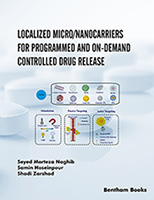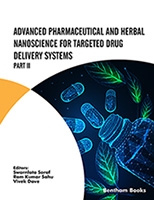Chemically synthesized drugs have been one of the major tools to combat several diseases, including bacterial and viral infections. These drug molecules however, face several barriers that include poor cellular uptake and instability in the physiological environment that mask the therapeutic potential. In order to circumvent these issues, there is a need to develop vehicles that could effectively and safely transport the drug molecules to the target sites. Nanotechnology has come up as one of the potent and viable strategies due to which, several candidates have been proposed, such as nanoparticles, liposomes, carbon nanotubes, mesoporous silica nanoparticles, etc. These vectors can be modulated to achieve delivery of even those drugs which are highly unstable making it difficult to reach the desired sites. This book compilation brings together some of the eminent scientists, working in different dimensions of nanotechnology. They have contributed chapters in their domain of knowledge that we believe would be really useful, not only for the young researchers, but also for the experts looking for some exhaustive compilations.
Chapter 1: It provides a brief exposure to nanotechnology and the imbibition of the drug delivery concept, with relevance to nanotechnology. Some of the pros and cons associated with the implication of nanotechnology have been outlined in this chapter.
Chapter 2: It provides an exhaustive account of the tools and techniques employed for the characterization of nanostructures. This chapter is an overview of the most employed techniques, including dynamic light scattering and laser diffraction for the determination of size distribution, zeta potential and its relationship with the stability and the surface charge of the particles, microscopies (optical microscopy, SEM, TEM, AFM) utilized in morphological analyses, spectroscopies in the infrared or ultraviolet-visible regions, and X-rays diffraction, which help to elucidate the crystalline state, polymorphism and drug-nanosystem interaction and the thermal analyses, which can provide information about the physical state, crystallinity, and stability.
Chapter 3: It deals with liposomes which are spherically shaped micro-vesicles composed of a bilayer of natural or synthetic non-toxic phospholipids, which spontaneously form closed structures when they are hydrated. This chapter accounts for the materials involved in the preparation of liposomes, i.e., techniques for preparation, characterization studies and application of liposomes for drug delivery.
Chapter 4: This chapter discusses dendrimers, which are highly branched synthetic polymeric macromolecules with a distinct three-dimensional spherical shape and nanometric size (1 - 100nm). This chapter reports the role of dendrimers in drug delivery systems for various agents in biology and medical science. Additionally, it covers the important aspectsof the dendrimers in the diagnoses of different types of cancer diagnosis and other therapies.
Chapter 5: It discusses nanomicelles which are colloidal dispersions containing a hydrophobic core and a hydrophilic shell that self-assemble into the nanosize range of 10 -100 nm. Pharmaceutically, nanomicelles serve as outstanding carriers as they can avert or moderate drug degradation by dropping adverse side-effects, thereby augmenting drug permeation through biological barriers with very minimum or no irritation at all, which ultimately enhance bioavailability. In this chapter, a critical history of nanomicelles is provided from its fundamental theory to preclinical and clinical achievements.
Chapter 6: It outlines details about carbon nanotubes (CNTs) which are defined as concentrically rolled graphene sheets but with many chiralities and helicities. Various synthetic approaches like arc discharge method, laser ablation methods, chemical vapour deposition, and pyrolysis are employed to produce CNTs. The present chapter explains the discovery of CNTs, their types, synthetic methods, various reactions possible with the usage of CNTs, applications of CNTs, safety profile, and the challenges involved.
Chapter 7: It describes the application of magnetic nanoparticles in drug delivery. Numerous magnetic nanoparticle-based formulations are already available in the market and even many more are under different stages of development. This chapter describes the progress done in this area due to the well-established synthesis procedures of size and shape-controlled magnetic nanoparticles, as well as their well-recognized surface functionalization approaches.
Dr. Surendra Nimesh
Dr. Nidhi Gupta
Prof. Ramesh Chandra





